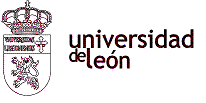| THEORY |
Topic 1. Physical Principles of Remote Sensing.
Topic 2. Characteristics of satellite images and their images.
Topic 3. Digital treatment of satellite images: corrections, operations of enhancement of the image, extraction of information
Topic 4. Introduction to Geographical Information Systems (GIS).
Topic 5. Structures and storage of spatial and attribute data in a GIS.
Topic 6. Data analysis with a GIS: search, reclassification and measurement operations, overlay operations, neighborhood and connectivity operations.
|
| PRACTICES |
P1: Characteristics of satellite images and spectral response of the materials of the terrestrial surface
P2: Image enhancement and color composites
P3. Visual analysis of images aerial photograph
P4: Supervised classification of the images.
P5: Consulting data with a GIS.
P6: Vector analysis.
P7: Raster analysis.
|
